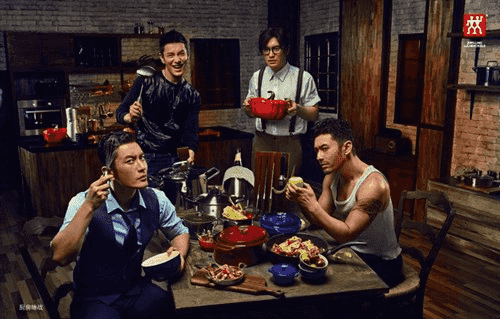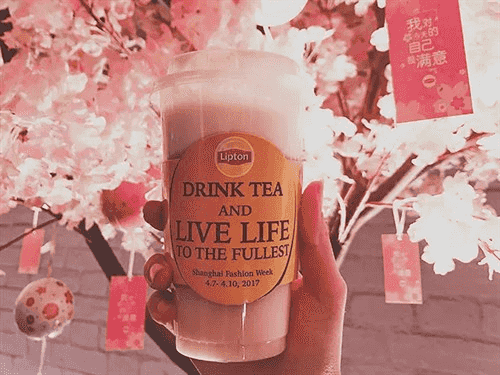
Evolving cultural values and how brands can use them to switch on growth.
Trend 1: Time lost and gained
Cultural observation
The last couple of decades have been defined by a sudden increase of the social and personal pace of life: from society passing to modernity, to early loss of carefree childhood and rise of hectic everyday routines. This begins to be realized now and results in the idea of time being more consciously acknowledged and increasingly valued.
Many new films and songs are about time passing by quickly and nostalgia for when protagonists were younger.
Cultural example 1:
Film “Youth” (《芳华》) Directed by Feng Xiaogang (冯小刚) and written by Yan Geling (严歌苓), released on December 15, 2017.

Cultural example 2:
Song “Waiting For You” (《等你下课》) by Jay Chou (周杰伦), released on January 18, 2018.

Branding implication
A brand that enables time saving and appreciating; either through functional benefits such as simplification of processes and efficiency of services, or through emotional ones by facilitating or re-enacting precious moments, or even curating laziness.
Brand example 1:
The speedy courier service provider Shansong (闪送) which emphasizes its quick responses and speed by designate individual courier to each package they deliver. On average, a parcel within 5 kilometers will be delivered within 23 minutes. They are also available 24 hours a day.

Brand example 2:
Pay-by-use mini KTV booths in public places satisfying consumers’ need for fast and easily accessible visits. Paid sessions can be as short as 15 minutes and could be paid through mobile phones right away.

Brand example 3:
Laziness becomes an increasingly important value counteracting periods of time with frantic pace, and enabling consumers to “own” time instead of the other way round. Branded festival of laziness where people win by doing nothing better than others.
Inewsweek.cn, the website under China Newsweek affiliated to China News Service (中国新闻社), in September 2016 held a “dazing competition” in Beijing. Participants were required to daze for up to 2 hours without doing anything – no talk, no music, no mobile phone. Those whose heartrates were among lowest became winners.

Trend 2: Multiplicity
Cultural observation
China is moving from a firm allocation of roles to a loosening of social hierarchies and strictness to meet the increasing complexity of Chinese modernity. As a result, people are embracing multiple interests, identities and roles to fit different occasions (at work, alone, with family, with friends, with strangers and so on).
Cultural example 1:
“Slash youth” became a popular buzzword in 2017 about living with multiple identities/roles, with many publications and events promoting it.

Cultural example 2:
Chinese web TV series “A Seven Faced Me” (《柒个我》), which is a remake of South Korea television series “Kill Me, Heal Me”. It featured popular star Zhang Yishan (张一山), whose character has seven personalities.

Branding implication:
A brand that understands and serves multifaceted personalities promotes multiplicity, rather than speaking in generalizations and addressing stereotypes. Facilitating diversity and offering tailor-made products or services that enable an effortless switch from one personality trait and occasion to another.
Brand example 1:
Brands are celebrating multiple identities by using spokespersons with diverse personality traits.
Huang Xiaoming (黄晓明) appeared with triple roles (actor/singer/environment protector) while featuring in Rémy Martin’s One Life/Live Theme posters/videos.

Brand example 1.5:
He also appeared with four personalities in the poster of ZWILLING J.A. HENCKELS.

Brand example 2:
The brand product that enables consumers’ transformation based on their different moods and occasions.
Schwarzkopf’s Fresh Light Hair Blush products allow consumers to add a few streaks of various colors to several strands of their hair quickly. And they can wash them off with normal hair washing.

Brand example 3:
In April 2017, CHANEL opened a pop-up cafe in Shanghai. Unlike previous pop-up cafes in Tokyo, Toronto, and Singapore, the Shanghai cafe really offers coffee and deserts to visitors. It is a museum of CHANEL brand, and also a place for fans to see latest CHANEL products. After trying out new CHANEL products on display, visitors were invited to take photos against a CHANEL product wall to earn free coffee coupons. The shop became a multi-functioning retail space for CHANEL brand and it did go viral on social media.

Trend 3: Playful technology
Cultural observation
Chinese have been historically fascinated by technological progress associating it with social and national prosperity. Technologically enabled unmanned services are penetrating more areas of life and are not only embraced – as opposed to the West where they are met with skepticism – but also turned into a source of unexpected fun and joyfully entertaining experience.
Cultural example 1:
From ordering and paying to assist with public order and information, technology is starting to penetrate all aspects of life creating playful and fun interactions.
Xian’er (贤二) is a robotic monk that Beijing Longquan Temple created together with AI experts. The 60-centimeter tall robot can answer simple questions, chant Buddhist sutras and play Buddhist music.

Note: Master Xuecheng is the Abbot of Longquan Temple.
Branding implication
A brand that is all about technical proficiency can add a twist of playfulness to its personality. By disguising mechanisms and interfaces in cute animation or entertaining processes, it humanizes technology while at the same time turns initial feelings of coldness and alienation into an intimate and inviting experience. In such a way, a brand can express technological expertise without losing warmth and approachability.
Brand example 1:
Samsung launched a campaign to highlight its AI assistant Bixby in smartphones. The scenarios featured in the creatives consisted of dialogues between the user and AI, with AI providing humorous answers.

Trend 4: Pragmatic honesty
Cultural observation
Hectic and vastly changing lifestyles, fierce competition and lonesomeness are creating an even stronger sense of anxiety, stress, and depression. Instead of the traditional stance of keeping these feelings suppressed in order to “save face”, we observe a massive shift towards acknowledging them: treating them with honesty and sometimes self-irony, as well as celebrating a state of imperfection.
Cultural example 1:
On China’s popular question-and-answer platform Zhihu (知乎), the topic of “how to overcome anxiety” was viewed by more than 1.6 million times and followed by 18,000+ users.

Branding implication
Brand should not promise a utopian – and in essence hypocritical – transformation, but speak with a pragmatic and sympathetic tone of the voice recognizing rough conditions, promoting realistic authenticity and motivating consumers to embrace their imperfection.
Brand example 1:
The fast-rising Chongqing liquor brand Jiangxiaobai (江小白) targets young consumers and positions itself as a social tool during team building activities in companies. In this poster, the text is similar to a seasoned colleague’s encouragement for a hard-working younger peer.
The text said:
“Toast to yourself.
You’ve eaten the first buns at 5 am,
You always turn off office lights because you’re the last one leaving.
Let’s seal the past in the liquor!
Then, when you recall old days, you have good stories to tell,
Those must be fxxking awesome days.”

Brand example 2:
In terms of graphic design trends, this is expressed by imperfect (glitch art) style – with out of focus, blurry and pixelated visuals – creating an aesthetically stylish execution of a non-perfect world.
Lenovo Wifi router poster on JD.com

Brand example 2:
Didi’s “Go when you want to go” series.

Trend 5: Spontaneity
Cultural observation
Spontaneity has to do with instant, unexpected and experiential gratification; its defining characteristic is that it happens so fast that catches people off guard resulting in a brief but high dosages of excitement. In China, it is very freshly relevant as it results inauthentic and more real reactions without people having time to rationally process it through traditional behavior and social conventions such as “public face”.
People want surprises as urban life becomes busier and social rules are less strict; thus, we see flash mobs, innovative public art events, and reality TV series basing their experience on the element of surprise.
Cultural example 1:
In 2017, one of the classic moments of the phenomenally popular web reality show “The Rap of China” (中国有嘻哈) was Chris Wu (吴亦凡) asking rappers to perform freestyle. In battle sessions, the rappers have also to think of lyrics at the same time as they rap.

Branding implication
Some brands can emphasize that it is all about instant gratification, pleasure and excitement in its most pure, authentic and real. Curating experiences and moments of small yet intense joy as small breaks within mundane routines. This can also be associated with products that stand for real and good taste and ingredients and/or youthful design and energy.
Brand example 1:
Tmall held a “See Now Buy Now” event at Shanghai’s National Convention and Exhibition Center on October 20, showing off branded fashion and apparel that will be available to buy for Alibaba’s 11.11 Global Shopping Festival.
It featured a number of the world’s iconic fashion and apparel brands, including Guerlain, Adidas, Pandora, Ray-Ban, Estee Lauder, Victoria’s Secret, Rimowa, Ralph Lauren, French fashion group SMCP, Italian leather goods brand Furla.
The event was taped live and broadcast on October 31 across seven media platforms, including Tmall and Taobao apps, video website YouKu, news aggregator Toutiao, Weibo, and traditional TV channel. While watching the show, audiences were able to buy what they see, when they see it, on all those platforms. Sites and platforms will offer listings, links or buttons to pre-order the items ahead of 11.11.

Brand example 2:
Pop-up shops and ambient media create a spontaneous feeling of pleasant and instantaneous discovery, associating related emotional values with the brand.
Lipton felt they were struggling with the business environment stereotype image, especially among younger consumers. To tackle the issue, it opened pop-up stores for two consecutive years at Shanghai Fashion Week to emphasize its youth and fashion element. In 2017, its four-day pop-up shop used cherry flower as the theme.

This article was originally published on Kantar.com